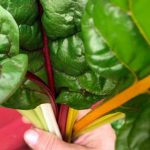Is plastic lumber safe for vegetable gardens? With the increasing interest in sustainable and durable materials for gardening, plastic lumber has become a popular choice for building raised beds and garden structures. This article will explore the composition of plastic lumber and its potential impact on vegetable gardens, addressing both the benefits and concerns associated with its use.
Plastic lumber is a versatile alternative to traditional wood, made from recycled plastics like milk jugs and soda bottles. It is commonly used in landscaping and gardening for its durability, resistance to rot and pests, and low maintenance requirements. However, questions have arisen regarding the safety of using plastic lumber in vegetable gardens, particularly due to the potential leaching of harmful chemicals into the soil.
While there are clear advantages to using plastic lumber in vegetable gardens, it is important to consider potential concerns about its impact on plant health and environmental safety. By carefully examining the benefits and drawbacks of plastic lumber, gardeners can make informed decisions about its use while ensuring the safety and sustainability of their vegetable gardens.
What Is Plastic Lumber
Plastic lumber, also known as recycled plastic timber, is an environmentally friendly alternative to traditional wood lumber. It is made from a blend of plastics and organic materials, such as sawdust or wood chips, which are combined to create a durable and long-lasting material for various outdoor applications. In gardening, plastic lumber is commonly used to build raised beds, garden borders, trellises, and other structures due to its resistance to rot and decay.
The composition of plastic lumber typically includes high-density polyethylene (HDPE) and other recycled plastics, along with additives that enhance its strength, flexibility, and UV resistance. This combination of materials makes plastic lumber highly durable and low-maintenance compared to natural wood, reducing the need for frequent replacements or treatments. Additionally, the use of recycled plastics in the production of plastic lumber contributes to waste reduction and environmental sustainability.
One key benefit of using plastic lumber in vegetable gardens is its resistance to moisture damage and pest infestation. Unlike natural wood, plastic lumber does not absorb water or provide a food source for insects or fungi that could harm vegetable crops.
This can lead to longer-lasting garden structures and fewer concerns about potential contaminants affecting the soil or plants. However, it’s important for gardeners to consider whether plastic lumber is safe for their vegetable gardens in terms of potential chemical leaching into the soil.
| Advantages | Details |
|---|---|
| Durable | Resistance to rot and decay |
| Sustainable | Made from recycled plastics |
| Low-Maintenance | Does not require treatments or frequent replacements |
Benefits of Plastic Lumber in Vegetable Gardens
Plastic lumber is a popular material choice for building raised beds and garden structures in vegetable gardens due to its numerous benefits. One of the key advantages is sustainability, as plastic lumber is often made from recycled materials, such as milk jugs and other plastic containers. This makes it an environmentally-friendly option for gardeners who are conscious of their environmental impact.
Additionally, plastic lumber is highly durable and long-lasting, making it a cost-effective investment for vegetable gardens. Unlike traditional wood, plastic lumber is resistant to rot, mold, and pests, which means it requires minimal maintenance and has a longer lifespan.
In addition to sustainability and durability, plastic lumber also offers excellent resistance to outdoor elements. It can withstand harsh weather conditions, moisture, and UV exposure without deteriorating or losing its structural integrity. This makes it an ideal choice for vegetable gardens where constant exposure to water and sunlight is inevitable. Furthermore, the smooth surface of plastic lumber prevents splinters and eliminates the need for chemical treatments to protect against decay or insects.
Furthermore, the use of plastic lumber in vegetable gardens reduces the demand for natural wood resources, contributing to forest conservation efforts. By choosing this alternative material over traditional wood, gardeners are promoting sustainable practices and helping minimize the environmental impact associated with deforestation. Overall, considering its durability, resistance to rot and pests, as well as its sustainable composition from recycled materials make using plastic lumber safe for vegetable gardens an excellent choice for both practicality and environmental stewardship.
| Advantages | Benefits |
|---|---|
| Sustainability | Made from recycled materials |
| Durability | Long-lasting with minimal maintenance |
| Resistance | To rot, mold, pests |
| Environmentally friendly | Promotes sustainability and reduces demand for natural wood resources |
Concerns About Plastic Lumber in Vegetable Gardens
Plastic lumber is becoming increasingly popular in gardening, including its use in vegetable gardens. While it offers numerous benefits such as sustainability, durability, and resistance to rot and pests, there are also concerns about its safety and environmental impact.
One of the primary concerns regarding the use of plastic lumber in vegetable gardens is the potential leaching of harmful chemicals into the soil. Some types of plastic lumber contain chemical additives that may be harmful to plants and can affect the quality and safety of the vegetables grown in the garden. Additionally, there is also a concern about the potential environmental impact of these chemicals leaching into the surrounding soil and water sources.
To address these concerns, it is important for gardeners to carefully consider the type of plastic lumber being used and ensure that it meets safety standards and regulations. It is recommended to choose plastic lumber that is specifically labeled as safe for use in vegetable gardens and has been tested for any harmful chemical leaching. Additionally, implementing best practices such as proper installation and maintenance can help minimize any potential risks associated with using plastic lumber in vegetable gardens.
While there are concerns about the safety and environmental impact of using plastic lumber in vegetable gardens, it is still possible to safely enjoy its benefits with proper precautions and considerations. By choosing safe plastic lumber products, following guidelines for installation and maintenance, and staying informed about regulations and standards, gardeners can continue to utilize this material while ensuring the safety of their vegetable crops.
Chemicals in Plastic Lumber
Plastic lumber is becoming increasingly popular in gardening, including its use in vegetable gardens due to its sustainability and durability. However, there are concerns about whether plastic lumber is safe for vegetable gardens, especially in terms of potential leaching of harmful chemicals into the soil and its impact on vegetable crops.
Plastic lumber is a synthetic building material made from recycled plastic and other additives. While it offers several benefits for vegetable gardens, such as resistance to rot, pests, and moisture, there is a concern that it may leach harmful substances into the soil over time, potentially affecting the safety of the vegetables grown in such gardens.
Chemicals commonly found in plastic lumber include stabilizers, colorants, and UV inhibitors. When exposed to various environmental conditions, these chemicals have the potential to leach into the surrounding soil and water. This raises concerns about whether it is safe to use plastic lumber in vegetable gardens where edible crops are grown.
To ensure the safety of using plastic lumber in vegetable gardens, it’s important to consider alternative materials that may pose fewer risks or take precautions when using plastic lumber. Below are some best practices for using plastic lumber in vegetable gardens:
- Use a barrier: Consider using a geotextile barrier between the plastic lumber and the soil to prevent direct contact and reduce the risk of chemical leaching.
- Choose food-safe options: Look for plastic lumbers that are specifically labeled as food-safe or suitable for use in organic gardening.
- Monitor for signs of degradation: Regularly inspect the condition of the plastic lumber and replace any degraded or damaged sections to minimize the risk of chemical leaching.
- Consider alternative materials: Explore natural wood, metal, or composite materials as alternatives to traditional plastic lumber for building raised beds and garden structures in vegetable gardens.
By considering these best practices and taking appropriate precautions when using plastic lumber in vegetable gardens, it is possible to mitigate potential risks associated with chemical leaching and ensure a safe environment for growing vegetables.
Regulations and Standards
When it comes to using plastic lumber in vegetable gardens, it is essential to be aware of the regulations and standards that govern its use. While plastic lumber offers several benefits, it is crucial to ensure that it meets safety requirements and environmental standards to avoid any potential harm to the soil or vegetable crops.
Regulations for Using Plastic Lumber in Vegetable Gardens
In many regions, there are specific regulations in place that dictate the use of materials in gardening, including plastic lumber. These regulations may outline the types of chemicals or substances that are prohibited from leaching into the soil, as well as guidelines for structural integrity and durability. It is important for gardeners to familiarize themselves with these regulations before using plastic lumber in their vegetable gardens.
Standards for Ensuring Safety
To ensure the safety of using plastic lumber in vegetable gardens, there are industry standards and certifications that can help guide gardeners in choosing the right materials. Look for products that are certified as safe for use in gardening and have undergone testing for chemical leaching and environmental impact. Additionally, consider seeking recommendations from gardening organizations or professionals who can provide guidance on selecting safe plastic lumber for vegetable gardens.
Environmental Impact Considerations
When choosing plastic lumber for vegetable gardens, it is also important to consider its environmental impact. Look for materials that are eco-friendly and sustainable, such as those made from recycled plastics or other environmentally friendly sources. By prioritizing materials with a minimal environmental impact, gardeners can ensure they are making a responsible choice for their vegetable gardens while still benefiting from the advantages of using plastic lumber.
By understanding and adhering to regulations and standards related to using plastic lumber in vegetable gardens, gardeners can prioritize the safety and well-being of their crops while enjoying the practical benefits of this material. Additionally, being mindful of environmental impact considerations will further support sustainable gardening practices while utilizing plastic lumber in vegetable gardens.
Best Practices for Using Plastic Lumber in Vegetable Gardens
When using plastic lumber in vegetable gardens, it is essential to follow best practices to ensure the safety of your crops and the environment. Proper installation and maintenance are key factors in using plastic lumber effectively in your garden.
Proper Installation
When using plastic lumber for raised beds or garden structures, it is important to follow the manufacturer’s guidelines for installation. This may include using specific hardware and fasteners designed for use with plastic lumber to ensure stability and longevity. Additionally, ensuring that the plastic lumber is properly secured and level will prevent potential issues with water drainage and soil containment.
Maintenance
Regular maintenance of plastic lumber in vegetable gardens is crucial for its longevity and safety. Inspect the lumber periodically for any signs of wear, damage, or degradation. If any issues are found, such as cracks or warping, take steps to repair or replace the affected pieces immediately to prevent potential leaching of harmful chemicals into the soil.
Soil Containment
When using plastic lumber for raised beds, it is important to ensure proper soil containment. This can be achieved by securely connecting the pieces of plastic lumber and creating a barrier between the soil and the surrounding environment. This will help prevent any potential leaching of chemicals from the plastic lumber into the soil while also maintaining a healthy growing environment for your vegetable crops.
By following these best practices for using plastic lumber in vegetable gardens, you can maximize its benefits while ensuring the safety and well-being of your plants and the environment.
Alternatives to Plastic Lumber
When considering the use of plastic lumber in vegetable gardens, it is important to explore alternative materials for building raised beds and garden structures. While plastic lumber offers benefits such as sustainability, durability, and resistance to rot and pests, there are concerns about its safety and environmental impact. Therefore, exploring alternative materials can provide gardeners with options that align more closely with their preferences and values.
One alternative material for building raised beds and garden structures is natural wood. Natural wood such as cedar, redwood, or untreated pine is a popular choice for vegetable gardens due to its natural appearance and ability to blend seamlessly into outdoor spaces. Additionally, natural wood is biodegradable and does not contain harmful chemicals that may leach into the soil or affect vegetable crops. However, natural wood may require regular maintenance to prevent rot and decay over time.
Another alternative material to consider is metal. Galvanized steel or aluminum can be used to construct raised beds and garden structures, offering a sturdy and long-lasting option for vegetable gardens. Metal materials are resistant to rot, pests, and harsh weather conditions, making them a durable choice for outdoor environments. However, it is important to consider the potential heat retention of metal materials in sunny climates, which may affect the temperature of the soil within raised beds.
Composite materials present another alternative for building raised beds and garden structures in vegetable gardens. Composite materials are typically made from a blend of recycled plastics and wood fibers, offering a compromise between natural aesthetics and durability. These materials are designed to withstand environmental conditions while minimizing concerns about chemical leaching into the soil. Additionally, composite materials require minimal maintenance compared to natural wood options.
Conclusion
In conclusion, the use of plastic lumber in vegetable gardens has become increasingly popular due to its sustainability, durability, and resistance to rot and pests. However, concerns regarding the potential leaching of harmful chemicals from plastic lumber into the soil have raised questions about its safety for growing vegetables. It is important for gardeners to consider these concerns and take necessary precautions when using plastic lumber in their vegetable gardens.
One of the key considerations when using plastic lumber in vegetable gardens is to ensure that it is made from safe and non-toxic materials. Checking for certifications and standards for plastic lumber can help ensure its safety for growing vegetables. Additionally, implementing best practices such as proper installation and maintenance can minimize any potential risks associated with plastic lumber in vegetable gardens.
While plastic lumber offers many benefits for building raised beds and garden structures in vegetable gardens, it is important to explore alternative materials that may be safer and more environmentally friendly. Natural wood, metal, and composite materials are viable options that offer similar durability and sustainability without the concerns associated with plastic lumber. Ultimately, making informed decisions about the materials used in vegetable gardens is essential for ensuring a safe and healthy environment for growing vegetables.
Frequently Asked Questions
What Type of Wood Is Safe for Vegetable Garden?
Cedar, redwood, and cypress are safe choices for building materials in a vegetable garden. These types of wood are naturally resistant to rot and decay, making them ideal for prolonged contact with moist soil.
Is Composite Wood Safe for a Vegetable Garden?
Composite wood is generally considered safe for use in a vegetable garden. It is made from a combination of wood fibers and recycled plastic, which should not leach harmful chemicals into the soil.
Is It Safe to Use Treated Lumber for Vegetable Beds?
Treated lumber, especially those treated with chromated copper arsenate (CCA) or creosote, should be avoided in vegetable gardens. These chemicals can potentially leach into the soil and may be taken up by the plants, posing health risks to those consuming the vegetables grown in treated beds. Opt for safer alternatives such as cedar or composite wood instead.

If you’re looking to get into vegetable gardening, or are just looking for some tips on how to make your current garden better, then you’ve come to the right place! My name is Ethel and I have been gardening for years. In this blog, I’m going to share with you some of my best tips on how to create a successful vegetable garden.





